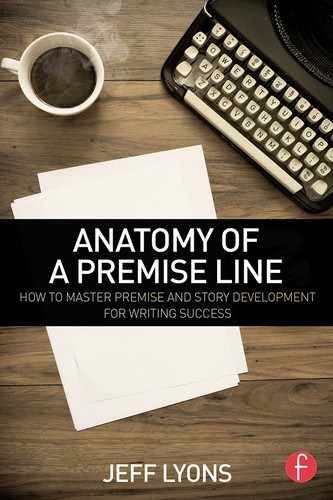Contents
Part 1Premise and Story—Building the Foundation
Chapter 1Your First Book in Story Development
Story Comes First—Writing Comes Second
Storytelling and Writing Are Not the Same Thing
The 7-Step Premise Development Process
Chapter 2What Is a Story Premise and Why Should You Care?
Common Definitions of Story Premise
Historical Definitions of Story Premise
A Working Definition of Story Premise
Chapter 3The Invisible Structure
The Blinding Ball of Information
Chapter 4The Visible Structure
Chapter 5The Power of the Premise Line
The Story Structure-Premise Connection
Mapping the Invisible Structure: The Four Clauses
Chapter 6A Story vs. a Situation
The Five Components of a Situation
What Do I Do If I Have a Situation and Not a Story?
Part 2The 7-Step Premise Development Process
Why a Process and Not Just a List of Steps?
Forms, Worksheets, and Samples
Step 1Determine If You Have a Story or a Situation
Step 2Map the Invisible Structure to the “Anatomy of a Premise Line” Template
Apply the Map to Your Story Idea
Step 3Develop the First Pass of Your Premise Line
Step 4Determine If Your Premise Is High Concept
Which Is Better: High Concept or Soft Concept?
What Is a High-Concept Premise?
The 7 Components of a High-Concept Premise
What Is a Soft-Generic Premise?
The High-Concept / Log Line Worksheet Exercise
What Is a Log Line and Why Should You Care?
How Do Premise Line and Log Line Work Together?
The Log Line / Tagline Worksheet Exercise
Step 6Finalize the Premise Line
Step 7Premise and Idea Testing
What Is Premise Testing and Why Should You Care?
How to Use the “Premise Testing Checklist”
Part 3Development: A Few Remaining Nuts and Bolts
Chapter 8I Nailed the Premise and Log Lines—Now What?
How to Use the “Short Synopsis Worksheet”
The “Short Synopsis Worksheet” Exercise
Chapter 9The Three Stages of Development
Chapter 10Character Development—What They Don’t Teach You
The Three Groups of Characters
Complication/Red Herring Characters
Reflection/Cautionary Tale Characters
The Only Real Reason Writers Get Blocked
The Only Real Solution to Writer’s Block
The 7-Step Process for Busting Writer’s Block
Appendix A: Worksheets and Forms
